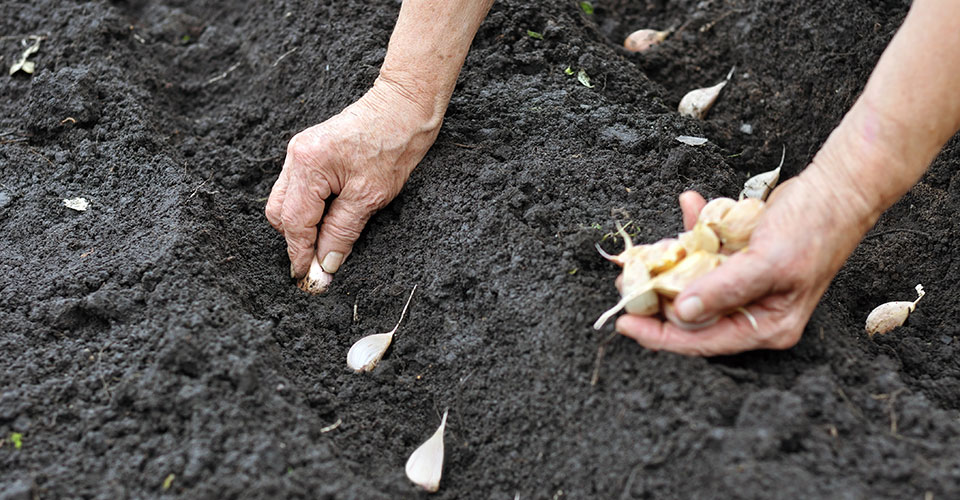
K-State horticulture expert Cynthia Domenghini says October is a good time to plant garlic so that the cloves have time to go through a chilling period.
Got Garlic? Kansas’ climate is well-suited for a healthy crop
Plant garlic this fall for summer harvest, says K-State’s Domenghini
At a glance: K-State horticulture expert Cynthia Domenghini says Kansas' climate is suitable for growing a variety of garlic types. The garden favorite should be planted in the fall for harvest next summer.
More information: Cynthia Domenghini, Cdom@ksu.edu
Related: Kansas Garden Guide | Vegetable Garden Planting Guide
Sept. 26, 2024
By Pat Melgares, K-State Research and Extension news service
MANHATTAN, Kan. – Is it an herb, a spice…or perhaps a miracle plant?
However one views garlic, October is a good time to plant the garden favorite because the cloves can begin to develop roots and shoots before freezing temperatures arrive, says Kansas State University horticulture expert Cynthia Domenghini.
“Kansas’ climate is suitable for growing a variety of garlic types,” Domenghini said. “By planting garlic in the fall, the cloves have time to go through a chilling period, which is important for bulb and flower growth.”
Domenghini suggests buying large, mature garlic bulbs from a reputable grower, rather than a grocery store. Separate the bulbs into individual cloves before planting.
“The papery covering does not need to be removed,” Domenghini said. “Cloves should be planted 1-2 inches deep and six inches apart within five days to prevent them from drying out.”
Gardeners should conduct a soil test and fertilize the crop according to those test results. The cloves should be watered in well, then apply a layer of mulch in the late fall or early winter “after a few frosts to insulate the soil,” according to Domenghini.
“Keep the area weed-free and remove the mulch in mid-spring so the soil will warm,” she said.
Bulbs should be ready to harvest next summer when the lower third of the foliage is yellow, and the cloves are beginning to separate.
Domenghini and her colleagues in K-State’s Department of Horticulture and Natural Resources produce a weekly Horticulture Newsletter with tips for maintaining home landscapes and gardens.
Interested persons can subscribe to the newsletter, as well as send their garden and yard-related questions to Domenghini at cdom@ksu.edu, or contact your local K-State Research and Extension office.
# # #
Sidebar: Question of the Week
When should I cut back ornamental grasses?
In general, avoid cutting back ornamental grasses while they are still green to allow them more time to store energy. As the grasses turn brown and dry, they can be cut back, if desired. However, many gardeners leave them intact through the winter to provide interest to the landscape. Early spring is typically the best time to cut back and divide ornamental grasses.
![]() -- Cynthia Domenghini, K-State horticulture expert, Cdom@ksu.edu
-- Cynthia Domenghini, K-State horticulture expert, Cdom@ksu.edu

K‑State Research and Extension is a short name for the Kansas State University Agricultural Experiment Station and Cooperative Extension Service, a program designed to generate and distribute useful knowledge for the well‑being of Kansans. Supported by county, state, federal and private funds, the program has county extension offices, experiment fields, area extension offices and regional research centers statewide. Its headquarters is on the K‑State campus in Manhattan. For more information, visit www.ksre.ksu.edu. K-State Research and Extension is an equal opportunity provider and employer.